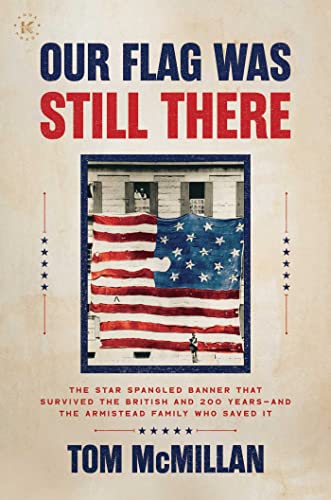
Author: McMillan, Tom
Price: $15.67
Category:Historical Biographies
Publication Date:2023-06-06T00:00:01Z
Pages:336
Binding:Hardcover
ISBN:10:1637587333
ISBN:13:9781637587331
Our Flag Was Still There details the improbable two-hundred-year journey of the original Star-Spangled Banner—from Fort McHenry in 1814, when Francis Scott Key first saw it, to the Smithsonian in 2023—and the enduring family who defended, kept, hid, and ultimately donated the most famous flag in American history. Francis Scott Key saw the original Star-Spangled Banner flying over Baltimore’s Fort McHenry on September 14, 1814, following a twenty-five-hour bombardment by the British Navy, inspiring him to write the words to our national anthem. Torn and tattered over the years, reduced in size to appease souvenir-hunters, stuffed away in a New York City vault for the last two decades of the nineteenth century, the flag’s mere existence after two hundred years is an improbable story of dedication, perseverance, patriotism, angst, inner-family squabbles, and, yes, more than a little luck. For this unlikely feat, we have the Armistead family to thank—led by Lieutenant Colonel George Armistead, commander of Fort McHenry, who took it home after the battle in clear defiance of U.S. Army regulations. It is only because of that quiet indiscretion that the flag survives to this day. Armistead’s descendants kept and protected their family heirloom for ninety years. The flag’s first photo was not taken until 1873, almost sixty years after Key saw it waving, and most Americans did not even know of its existence until Armistead’s grandson loaned it to the Smithsonian in 1907. Tom McMillan tells a story as no one has before. Digging deep into the archives of Fort McHenry and the Smithsonian, accessing never-before-published letters and documents, and presenting rare photos from the private collections of Armistead descendants and other sources, McMillan follows the flag on an often-perilous journey through three centuries. Our Flag Was Still There provides new insight into an intriguing period of U.S. history, offering a “story behind the story” account of one of the country’s most treasured relics.






